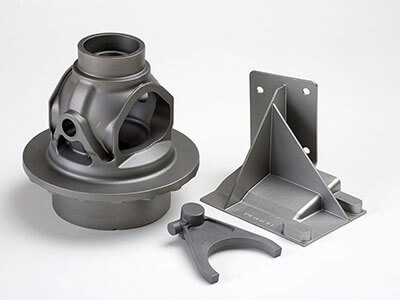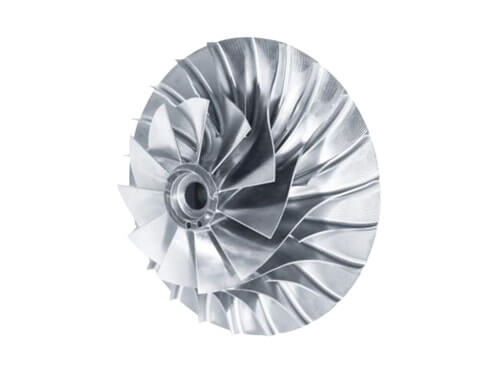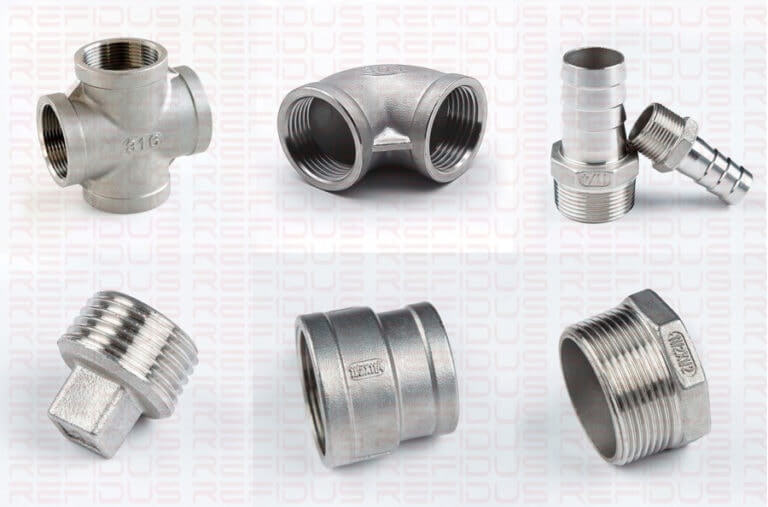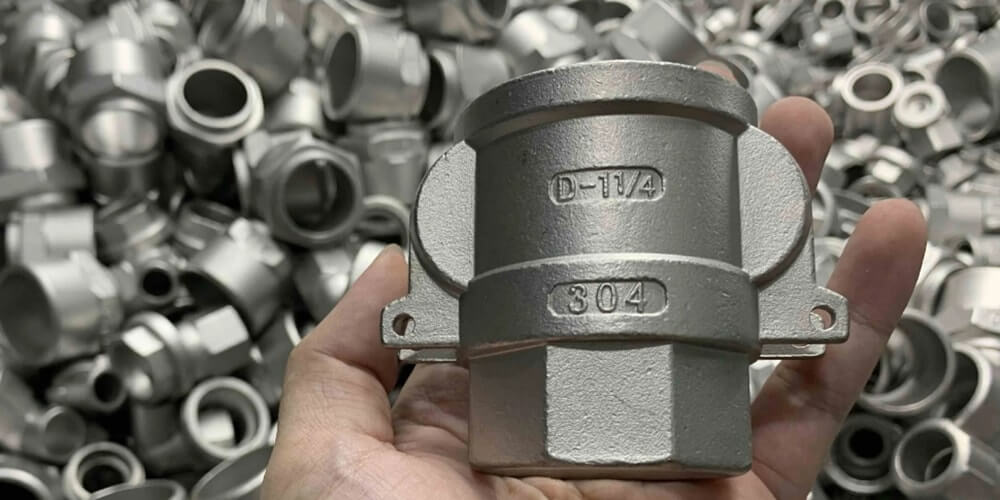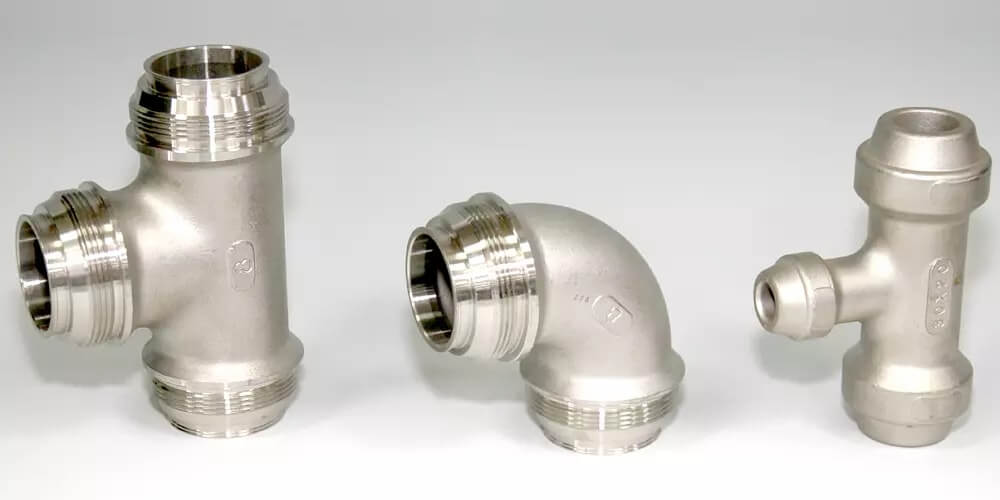Pipe fitting casting plays a crucial role in various industries, including plumbing, oil and gas, construction, and more. In this comprehensive guide, we will delve into the essential aspects of pipe fitting casting, covering materials, casting processes, and quality control to ensure top-notch performance.
Pipe Fitting Materials: Strengths and Applications
Iron
Iron, specifically cast iron and ductile iron, is a common material used for pipe fittings due to its strength, durability, and resistance to corrosion. Cast iron fittings are often used in drainage and sewage systems, while ductile iron fittings are popular in water supply and distribution networks.
Advantages:
- High strength and durability
- Corrosion resistance
- Cost-effective
Disadvantages:
- Heavy and difficult to handle
- Brittle (cast iron)
Steel
Steel fittings, including carbon steel and stainless steel, offer excellent strength and corrosion resistance, making them ideal for high-pressure applications and corrosive environments. Stainless steel fittings are often used in the food and beverage, pharmaceutical, and chemical industries.
Advantages:
- High strength
- Corrosion resistance (stainless steel)
- Suitable for high-pressure applications
Disadvantages:
- Higher cost compared to iron
Brass and Bronze
Brass and bronze fittings are known for their excellent corrosion resistance, machinability, and aesthetic appeal. They are commonly used in plumbing, gas supply systems, and decorative applications.
Advantages:
- Corrosion resistance
- Easy to machine and install
- Aesthetic appeal
Disadvantages:
- Lower strength compared to iron and steel
Plastic
Plastic pipe fittings, such as PVC, CPVC, and PEX, are lightweight, corrosion-resistant, and easy to install. They are suitable for various applications, including water supply, drainage, and irrigation systems.
Advantages:
- Lightweight and easy to handle
- Corrosion resistance
- Low cost
Disadvantages:
- Lower strength and temperature resistance compared to metal fittings
| Material | Advantages | Disadvantages |
|---|---|---|
| Iron | – High strength and durability
– Corrosion resistance – Cost-effective |
– Heavy and difficult to handle
– Brittle (cast iron) |
| Steel | – High strength
– Corrosion resistance (stainless steel) – Suitable for high-pressure applications |
– Higher cost compared to iron |
| Brass/Bronze | – Corrosion resistance
– Easy to machine and install – Aesthetic appeal |
– Lower strength compared to iron and steel |
| Plastic | – Lightweight and easy to handle
– Corrosion resistance – Low cost |
– Lower strength and temperature resistance compared to metal fittings |
Investment Casting Pipe Fittings
Investment casting is a highly accurate and versatile casting method that produces high-quality pipe fittings with intricate details and tight tolerances. This process is particularly suitable for small to medium-sized parts and can accommodate a wide range of materials, including carbon steel, stainless steel, brass, and bronze.
The Investment Casting Process for Pipe Fittings
Here is a step-by-step overview of the investment casting process for pipe fittings:
The process begins with the creation of a wax pattern, which is an exact replica of the final pipe fitting. A master die, typically made from aluminum or steel, is used to inject molten wax into it under pressure. Once the wax solidifies, the pattern is removed from the die, and any necessary gates or runners are added.
Multiple wax patterns are assembled onto a central wax sprue or tree, which will eventually form the channels for molten metal to flow into the mold. This assembly allows for multiple pipe fittings to be cast simultaneously, increasing production efficiency.
The assembled wax patterns are dipped into a liquid ceramic slurry, coating the entire surface. The slurry-coated assembly is then covered with a refractory material, typically sand or fine ceramic particles, which adheres to the wet slurry. This process is repeated multiple times, building up a thick ceramic shell around the wax patterns. The shell is allowed to dry and harden, forming a strong mold.
The hardened ceramic shell is placed in an oven or autoclave, where the wax inside melts and drains away, leaving a hollow cavity in the shape of the desired pipe fittings. This step is where the term “lost-wax casting” originates.
The ceramic mold is preheated to a high temperature, typically around 1,000-1,200°C (1,832-2,192°F), to remove any residual moisture and wax, as well as to prepare it for the molten metal. The molten metal, heated to the appropriate temperature, is poured into the preheated mold, filling the cavities left by the wax patterns.
The molten metal cools and solidifies within the ceramic mold, taking on the shape of the desired pipe fittings. Once the metal has solidified, the ceramic shell is removed, usually by mechanical means or through the use of high-pressure water jets.
The individual pipe fittings are separated from the central sprue and undergo any necessary post-casting processes, such as machining, grinding, or heat treatment. Finally, the finished pipe fittings are inspected for defects and dimensional accuracy using methods like visual inspection, dimensional checks, and non-destructive testing.
Advantages of Investment Casting for Pipe Fittings
- High dimensional accuracy and surface finish: Investment casting produces pipe fittings with tight tolerances and a smooth surface finish, often eliminating the need for extensive machining or finishing.
- Intricate details and complex geometries: The process allows for the production of pipe fittings with intricate details, undercuts, and complex geometries that may be difficult or impossible to achieve with other casting methods.
- Wide range of materials: Investment casting is compatible with various metals, including carbon steel, stainless steel, brass, and bronze, enabling manufacturers to choose the best material for specific applications.
- Low material waste: Investment casting often results in less material waste compared to other casting methods, as the wax patterns are created to closely match the final part dimensions.
Disadvantages of Investment Casting for Pipe Fittings
- Higher tooling and production costs: Compared to other casting methods, investment casting generally has higher tooling costs due to the need for precision master dies and specialized equipment. The process is also more labor-intensive and time-consuming, which can result in higher production costs.
- Slower production rate: Since each ceramic shell must be built up and dried individually, the production rate for investment casting is slower than other casting methods like die casting or sand casting. This can limit its suitability for high-volume production runs.
- Size limitations: Investment casting is best suited for small to medium-sized parts due to the limitations of wax pattern production and the handling of ceramic shells. Large pipe fittings may require alternative casting methods, such as sand casting or centrifugal casting.
Despite these drawbacks, investment casting remains a popular choice for manufacturing high-quality pipe fittings that require intricate details, tight tolerances, and a smooth surface finish. Its versatility in handling various materials and complex geometries makes it a valuable process in the pipe fitting casting industry.
Other Processes for Pipe Fittings
Sand Casting
Sand casting is a versatile and cost-effective method for producing pipe fittings, especially for large and complex parts. It involves creating a mold from sand and pouring molten metal into it, allowing the metal to cool and solidify before removing the sand mold.
Pros:
- Suitable for a wide range of materials
- Low tooling cost
- Ideal for large and complex parts
Cons:
- Lower dimensional accuracy compared to other casting methods
- Rough surface finish
Die Casting
Die casting is a high-pressure casting method that uses a reusable metal mold, producing pipe fittings with excellent dimensional accuracy and surface finish. It is most suitable for non-ferrous metals, such as aluminum, zinc, and brass.
Pros:
- High dimensional accuracy and surface finish
- Fast production rate
- Low per-unit cost for large production volumes
Cons:
- High initial tooling cost
- Limited to non-ferrous metals
Permanent Mold Casting
Permanent Mold Casting, also known as gravity die casting, is a method that uses a reusable metal mold to produce pipe fittings with good dimensional accuracy and surface finish. This process is particularly suitable for non-ferrous metals like aluminum, copper, and their alloys.
Pros:
- Good dimensional accuracy and surface finish
- Lower tooling cost compared to die casting
- Suitable for medium to large production volumes
Cons:
- Limited to non-ferrous metals
- Less intricate details compared to investment casting
Quality Control and Inspection in Pipe Fitting Casting
Visual Inspection
Visual inspection is a crucial step in the quality control process, where trained inspectors examine pipe fittings for surface defects, such as cracks, porosity, and inclusions. This method helps identify potential issues before they become costly problems.
Dimensional Checks
Dimensional checks ensure that the pipe fittings meet the required specifications for size, shape, and tolerances. This can be done using various measurement tools, such as calipers, micrometers, and coordinate measuring machines (CMM).
Non-Destructive Testing (NDT)
NDT methods, such as radiography, ultrasonic testing, and magnetic particle inspection, are used to detect internal and subsurface defects in pipe fittings without damaging the parts. These tests are essential for ensuring the integrity and reliability of pipe fittings in critical applications.
Industry Standards and Certifications
Adherence to industry standards and certifications, such as ANSI, ASME, ISO, and ASTM, ensures consistent quality and performance in pipe fitting manufacturing. These standards govern aspects such as dimensions, material properties, and testing procedures, promoting uniformity and reliability across the industry.
Conclusion
Understanding the various aspects of pipe fitting casting, including materials, casting processes, and quality control, is essential for ensuring top-quality performance in diverse applications. By adhering to industry standards and implementing rigorous inspection methods, manufacturers can produce pipe fittings that meet the stringent requirements of industries worldwide.
|
Surface |
Gravity Die Casting has better surface finish and dimensional accuracy compared to other casting methods. |
|
Mechanical properties |
Improved mechanical properties due to the fine-grained structure of the castings. Lower porosity levels in the castings, resulting in better strength and leak-tightness. |
|
Efficiency |
Higher production rates and lower production costs compared to other casting processes. |
|
Structure |
Ability to produce complex shapes with minimal post-processing requirements. Uniformity in casting dimensions, reducing or eliminating the need for additional machining. |
|
material |
Wide range of materials can be cast using this process. |
